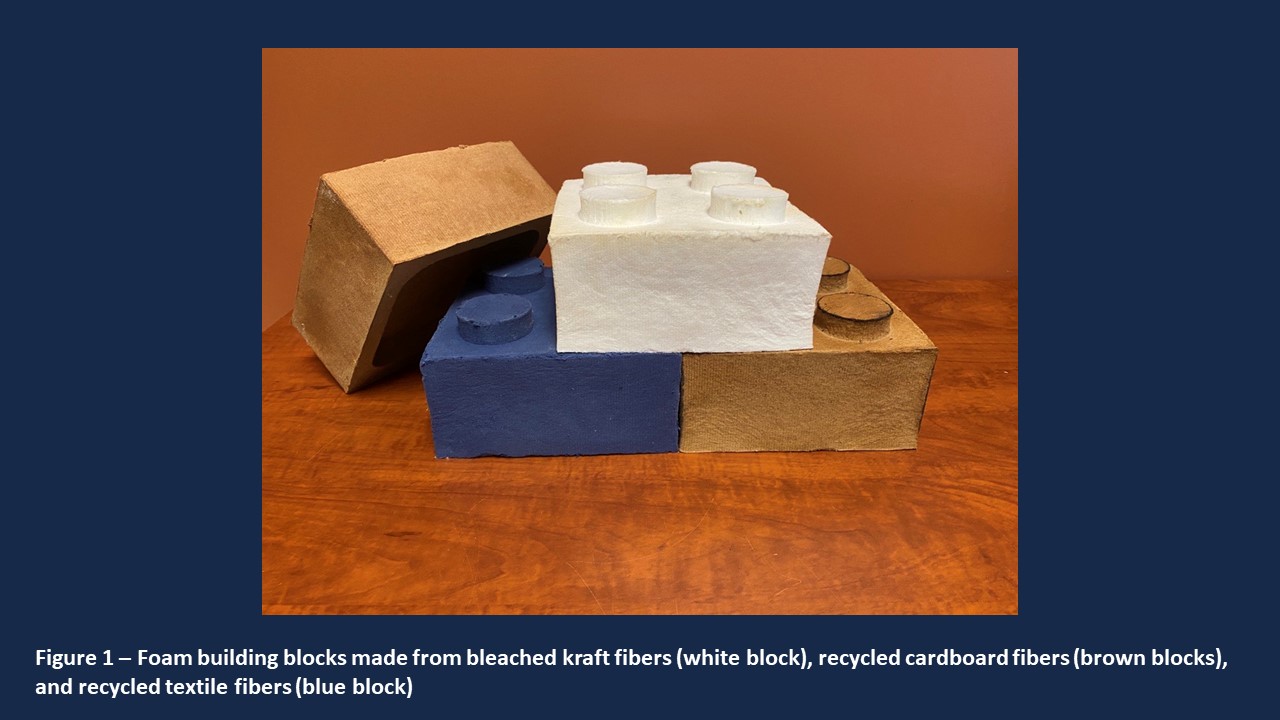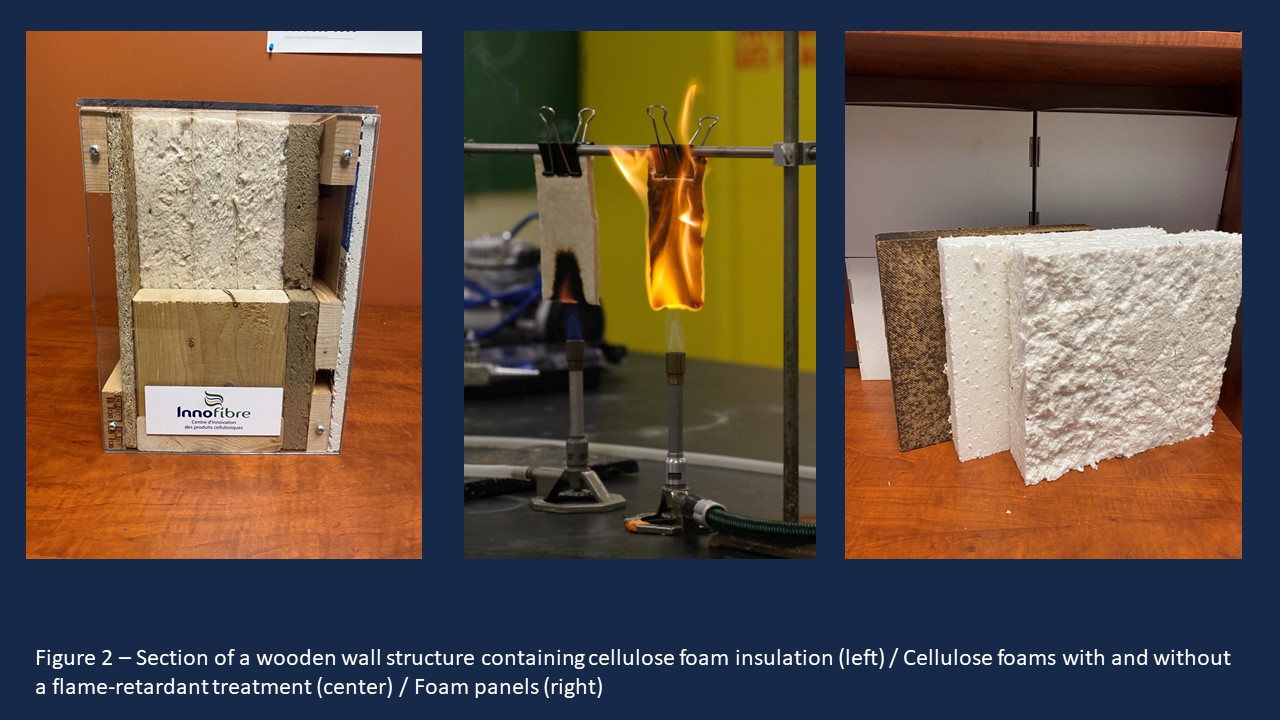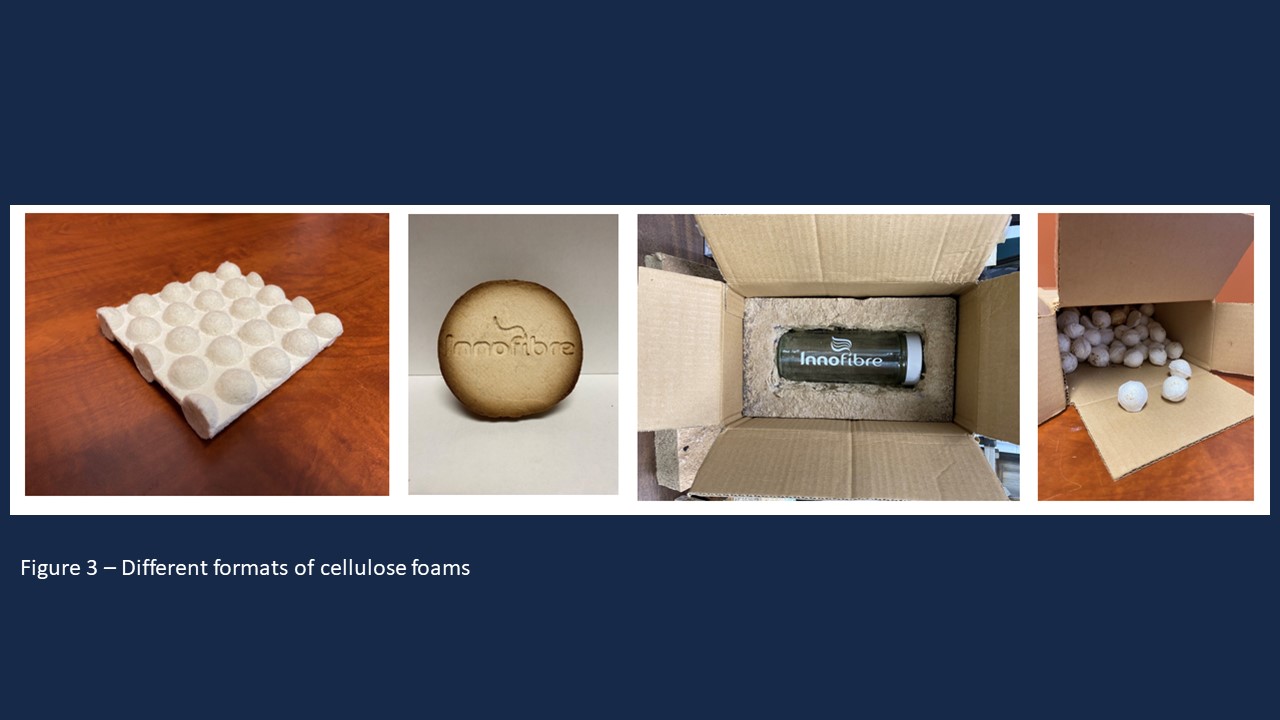Cellulose Foams, a New Ally to Support the Ecological Transition
1 August 2024
Author : David Myja, Innofibre researcher
Wood and its components, including cellulose fibers, are major assets in the ecological transitions taking place at this moment. Cellulose products are gradually replacing petroleum-based plastics, especially in the packaging industry. In recent years, research has expanded the applications of wood products, with the development of a new material: cellulose foams.

Today’s consumers have a strong willingness to reduce their environmental impacts and are increasingly putting pressure on government officials to bring about stricter regulations aimed at reducing or banning single-use plastics. The manufacturing industry is turning towards the development of products made with natural and renewable resources such as wood. Wood and its components are used for developing a wide range of products, from furniture, construction structures, paper, and cardboard. While several materials can be obtained from wood, some plastic products lack bio-sourced equivalents available on the market. However recent research has made it possible to envision replacing petroleum-derived products by products derived from wood fibers, such as cellulose foams. Indeed, these have unique properties, including their very low density (between 15 and 100 kg/m³), which are different from other fibrous materials, such as paper, cardboard, or some thermoformed products, making them a promising material to replace some plastic products.
Cellulose foams developed at Innofibre are made exclusively from cellulose fibers. They are therefore 100% bio-sourced, recyclable, and biodegradable at the end of their useful life. This material can be produced using a wide variety of fiber types, ranging from chemical pulp to mechanical pulp, virgin fibers, recycled fibers, modified, or natural fibers, and even other types of fibers originating from the textile and agricultural sectors. At this moment, two applications are targeted for cellulose foams, namely that of thermal insulation and of cushioning foam in product packaging.
In the field of construction, there is a wide interest for incorporating bio-sourced products into various elements of a building. Cellulose foams, with their thermal conductivity between 0.0075 and 0.0056 W/m.K (R-value between R-3.4 and R-4.5 per inch), are interesting alternatives for building insulation. Bio-sourced solutions already exist in the field of thermal insulation (for example spray-applied cellulose). However, these products must be applied in bulk and are mainly used for attic insulation. Cellulose fo
ams, having a rigid mechanical structure, can be installed as panels in wall compositions. In addition, the manufacturing of cellulose foams is a water-base process, which allows for a simple and homogeneous incorporation of various additives that are essential to reach some crucial properties of the materials (e.g., fire retardant and moisture resistance).

As for their use in the packaging industry, cellulose foams could replace polyethylene foams, styrofoam, or even bubble wrap. Physical characterization conducted on cellulose foams has shown that they are very similar to petroleum-based plastic foams. Moreover, their manufacturing process makes it possible to obtain different formats. For example, to obtain simple formats, the foam can be cut from a larger panel, whereas more complex structures can be made by shaping the foam in a mould.

Innofibre is working on obtaining further knowledge about this new product’s properties and manufacturing process. The expertise gained, combined with the availability of various sources of fibers, will allow the manufacturing sector in several regions to diversify its offer of sustainable bioproducts. It will also lead the construction sector to use more environmentally friendly materials while contributing to reduce plastic wastes in the constantly growing packaging sector.





